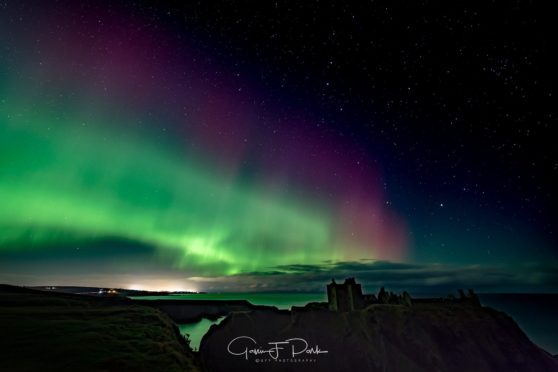Aberdeenshire and the Highlands may be among the best places in Scotland to see an extraordinary display of the Northern Lights this weekend.
A solar storm on its way to Earth could mean they might be seen from the UK on Saturday night, forecasters have said.
And the Met Office believes the phenomenon, known as the aurora borealis, may be most visible in northern parts of Scotland.
Skies in Glasgow and Edinburgh are forecast to be cloudy on Saturday night, but there could be breaks long enough to reveal the lights.
Further north, in the Scottish Highlands, or east, in Dundee and Aberdeen, the sky is likely to be clearer.
The Northern Lights are created by disturbances in Earth’s magnetosphere caused by a flow of particles from the Sun, and are usually concentrated around the Earth’s magnetic poles.
The southward shift of the lights on Saturday is caused by an ejection of plasma, known as a Coronal Mass Ejection (CME) from the Sun, which followed a solar flare on Wednesday.
Bonnie Diamond, meteorologist at the Met Office, said: “A Coronal Mass Ejection has happened and the effects of that are expected to arrive later tomorrow evening.
“This type of active geomagnetic storm means that there is the possibility of the aurora borealis, commonly known as the Northern Lights.
“Whether or not you will see the Northern Lights depends on where you are and what the weather is like. Scotland is where you’re most likely to see it.
“There’s a couple of showers on the west coast of Scotland on Saturday evening, and with those showers there will be a bit of cloud.
“However, the clearest skies are further east in Aberdeenshire, where there are plenty of clear skies. Further north, you’re pretty likely to see something.”
The Met Office’s Space account tweeted: “CME forecast to arrive late March 23 following C5 flare from sunspot AR2736. Active-minor geomagnetic storm periods possible with low risk of moderate storms.
“As a result, aurora may be visible in Scotland where cloud breaks. Latest forecast available”
NOAA, an American agency that monitors the atmosphere, said the Northern Lights could be visible as far south as Michigan and Wisconsin in the United States.
